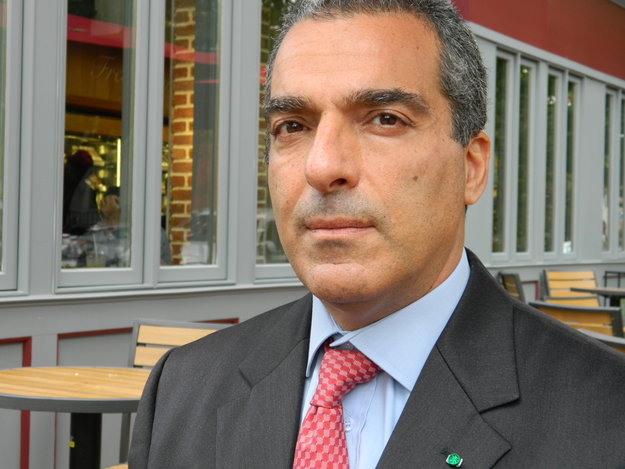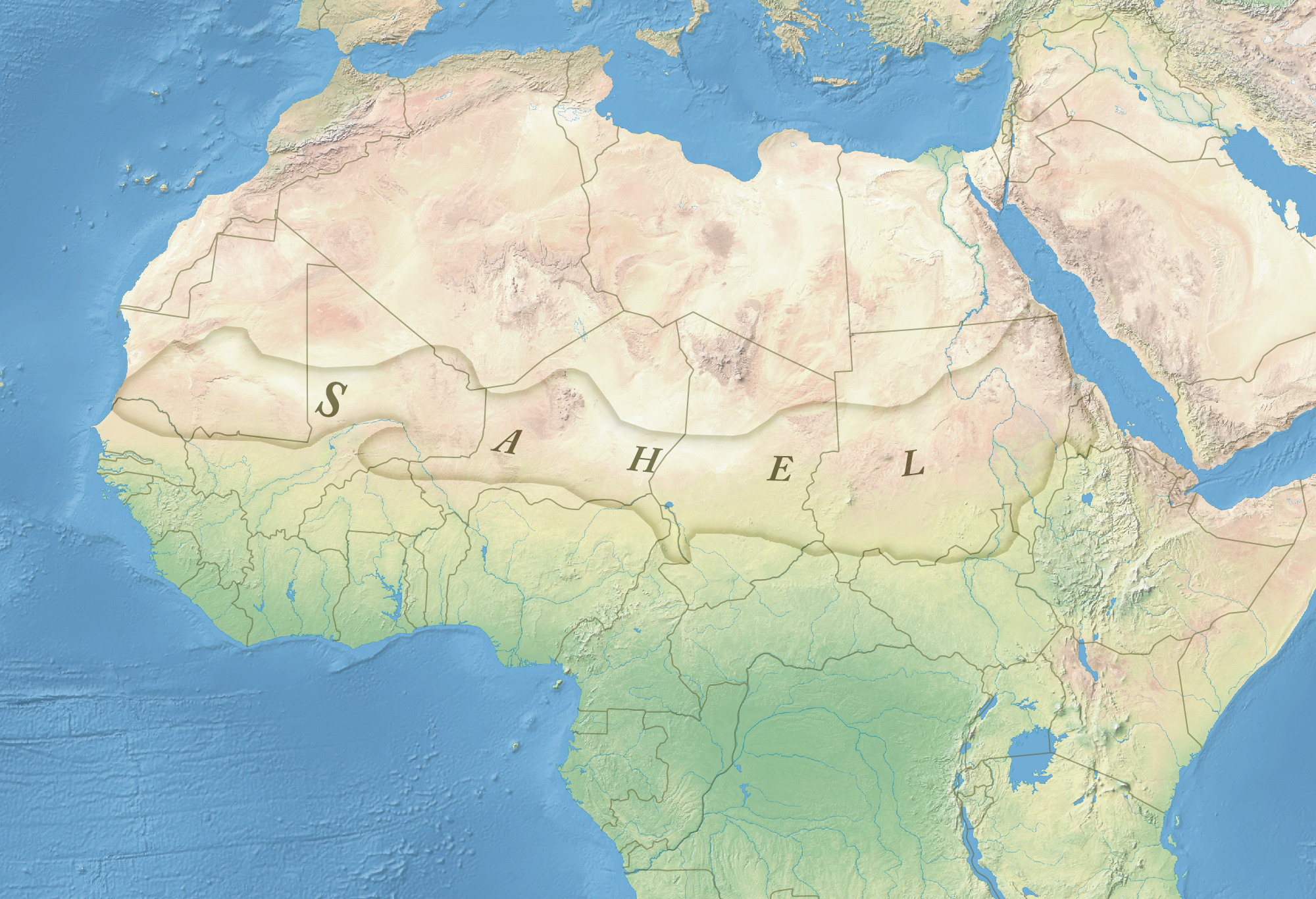International Institute for Middle East and Balkan Studies (IFIMES)[1] from Ljubljana, Slovenia, regularly analyses developments in the Middle East, the Balkans and around the world. Ambassador (ret.) Dr. Haim Koren, Member of IFIMES Advisory Board and Ambassador Gideon Behar, special envoy for climate change and sustainability at the Israeli Foreign Ministry prepared comprehensive analysis entitled “Security in the Shadow of Climate Change in the Sahel”. They are analysing climate change as a significant risk multiplier in the field of stability and terrorism in the Sahel region.

● Ambassador (ret.) Dr. Haim Koren,
Member of IFIMES Advisory Board

● Ambassador Gideon Behar

Map of the Sahel. From Wikimedia Commons [CC BY-SA 3.0]
The Sahel[2] zone in Africa is one of the most sensitive area in the world to climate changes and desertification processes. Currently, it is experiencing extremely rapid population growth and a growing wave of immigration, and at the same time, a significant deterioration in security and the governance. This is evidenced by the significant strengthening of terrorist organizations in recent years, such as Boko Haram around Lake Chad and the Islamic State (AQIM), which is concentrated in Mali and Mauritania, as well as a variety of other terror organizations that belong to various Islamist streams.
Alongside these major terrorist organizations, which are now established and gaining strength, there are dozens of other armed groups, which are overtaking vast territories in the region. Some of them are involved in terrorism, others in crime, and some in both.[3] At the same time, violent conflicts are multiplying between herders and local peasants over the diminishing resources of water and fertile soil for pasture and agriculture.[4] These conflicts cause the death of many thousands every year, and are changing the social, ethnic, religious, and even geographical structure of the desert frontier regions in Africa.
The significance of the connection between climatic-environmental crises and the threat to the livelihood resources of the population and its security and the escalation of terrorism has become increasingly evident in academic research and among international observers.[5] The present understanding is that the measures taken against security instability and terrorism should also include international aid, local development, and the creation of sources of livelihood for the population. The purpose here is to examine the connection between climate change and desertification in the Sahel and the security and terrorism challenges that exist in the area. We shall discuss three security challenges, namely, that of Boko Haram around Lake Chad, al-Qaʿida in the Maghreb (AQIM), and the conflicts between herders and farmers.
Historically, the western part of the Sahel was sometimes known as the Sudan region (bilād as-sūdān, lit.”lands of the blacks”). This belt was roughly located between the Sahara and the coastal areas of West Africa.[5] The Sahel region in Africa is comprised of a belt up to 1,000 km (620 mi) wide that spans 5,400 km (3,360 mi) from east to west.[6]
The Lake Chad region provides a good example of the connection between climate change and environmental degradation and the rise of terrorism and general insecurity. It has experienced an extremely high population growth of over three percent per year in recent decades. As a result, the area's population has grown to approximately 40 million people, exerting massive pressure on natural resources, especially water for agriculture, pasture, and the Lake’s fish stocks.[7] Residents suffer from extreme poverty, illiteracy, malnutrition and hunger, high unemployment, and along history of local conflicts. Their primary source of livelihood used to be Lake Chad, which provided them with a substantial portion of their food resources, such as proteins from fishing, food from crops and pastures, and drinking water for livestock. It provided ecological services, employment, and food to all the neighboring surroundings. However, the combination of a decrease in precipitation and a rise in temperature alongside the shortening of the rainy season, drought, and over-irrigation, has led to an extensive drying up of the Lake. The Lake once covered an area of approximately 25,000 square kilometers, and now only covers less than a tenth of that.
Boko Haram was founded in 2002 and, since then, has taken over extensive areas in Nigeria (where it originated and developed), Chad, Cameroon, and Niger. The organization holds an extremist Islamist ideology, and its overarching goal is to establish an Islamic caliphate. It is responsible for the death of tens of thousands of people and millions of refugees. In the process it has taken over resources, both legal (land, crops, trade) and illegal (drugs, weapons, and smuggling). Boko Haram is a clear example of a terrorist organization flourishing in a climate crisis area.
Inadequate resources and access to water and arable land, together with climate change have exacerbated the consequences of desertification, which include increasing sandstorms, accelerated dehydration of cultivated areas, and increasingly frequent waves of locusts in recent years, including this year. (They have not yet reached Lake Chad but are already nearby.) Together, these forces amplify the problem of refugees and displaced persons, which has escalated because of the terror activity of Boko Haram. At the same time, the central governments of the countries on the shores of the Lake have weakened, and a governmental vacuum emerged, as will be elaborated on later, which Boko Haram was quick to fill. The social divisions in the area are exploited by the organization to impart a sense of belonging to those who join it. Indeed, many of its recruits are refugees who have been forced by climate and environmental degradation to leave their homes. Boko Haram provides food and employment to those who join its ranks and who were pushed by the desperate situation to adopt its extreme ideology. The current Covid-19 crisis is, in addition, exacerbating the problem of lack of governance around Lake Chad and strengthening Boko Haram.[8]
Another Islamist organization that thrives in areas affected by climate change is al-Qaʿida in the Maghreb, which has been active in Mali, Niger, and Mauritania,[9] and has recently significantly expanded into Burkina Faso.[10] This semi-arid area isundergoing a significant climate change process, which is manifested by drought, declining rainfall, and rising temperatures. It is simultaneously undergoing a distinct desertification process caused by deforestation, overgrazing, and loss of soil as a result of various factors including: wind drift, and the depletion of surface and subterranean water sources.[11] AQIM has been active in numerous terrorist activities against governmental and United Nations forces, as well as the civilian population. For example, AQIM carried out the mass shooting at Mali’s Raddison Blu Hotel in November 2015, the hostage crisis at Burkina Faso’s Splendid Hotel in January 2016, and the bombing of a French-UN military base in Mali in January 2017 - just to mention few of its most well-known attacks.[12]
The regimes in the Sahel region in most cases are characterized by inherent weakness, an inability to influence considerable territories in their countries, and a lack of resources and funds. Thus, their ability to cope with the environmental crises of climate change and desertification is minimal. Population growth in these countries is one of the highest in the world, and places an additional burden on the natural systems, which are cracking already under the increasing human pressure to provide more resources. To illustrate that, we may point to the incredible fact that almost 24 percent of the global demographic increase between now and 2050 will occur in ten of the eleven countries located in the Sahel area.[13] This population growth also makes it extremely difficult for governments to provide services and support to the population. It is not surprising that in recent years there have been intensifying waves of immigration from the countries of the region by migrants in search of a better future. The Sahel states have become easy prey for various terrorist organizations, armed gangs, criminal organizations, and smugglers. Amid little to no protection or security afforded by the governments in the area, residents are forced to establish local protection organizations.
Alongside the well-known large terrorist organizations and the dozens of various armed organizations throughout the vast area of the Sahel, the struggle for a livelihood, which depends on grazing land and water for both herders and farmers, has intensified in recent decades.[14] With the Sahara spreading southward continuously for decades into many areas along the Sahel strip herders are pushed toward the more fertile areas where they collide with farmers, and trample the fields with their herds. They also are known to burn and plunder entire settled villages.There is ahistorical background to these conflicts. In the case of Nigeria and Mali, for example, the herders belong to the Fulani People. The Fulani Jihad in the years 1804-1808 led by Uthman Dan Fudio against the Hausa Kingdoms in Northern Nigeria. This tradition continues to inspire certain groups in the Sahel region.[15]
In some cases, the nomads are Muslims and the farmers are Christians. The struggle for a livelihood thus involves, in that respect, a salient dimension of ethnic and religious differences. Therefore, the dividing lines between the various groups are not limited to the struggle for a livelihood - farmers versus herders - but also include ethnic, religious, cultural, linguistic, and other markers of identity.
Formerly agricultural areas have become grazing areas, and this has caused a decline in the receding vegetation cover. The uncontrolled grazing accelerates the desertification processes and makes way for a prairie land covered by grass in formerly inhabited land abandoned by farmers. Thus, we are witnessing a very significant process that has the power to change the ethno-religious composition of the Sahel region, as well as its geography.
This situation is of great concern to the countries of the region, as well as to the international community, which are required to become more involved and invest effort in stabilizing the region. There is a growing recognition that the challenges of terrorism and instability in the Sahel cannot be addressed only by military means or security tools. Other tools and alternative approaches are needed. The position paper prepared by the ADELPHI Research Institute for the G7 countries on strengthening security in the Sahel recommends several steps, including strengthening governments and government institutions, developing an adaptation to climate change in the field of food and water security, economic development and international aid, including humanitarian, establishing local conflict resolution mechanisms, strengthening the resilience of cities to the effects of climate change, increasing long-term financing, developing an early warning capability for natural disasters, and implementing a procedure for drawing lessons from events.[16]
The promoting of adaptation to climate change aims to reduce conflicts. An additional factor required is a better understanding of the local situation in order to,strengthen the actions of governments and local government. Local policymakers can also improve access to natural resources, and help communities develop multiple livelihoods, such as the production of renewable energy, and the restoration of water, land and agricultural areas. In addition, they should adopt a long-term commitment to build cooperation and trust between locals and international aid agencies. This trust is required to gain long-term stability.[17]
In conclusion, climate change is a significant risk multiplier in the field of stability and terrorism in the Sahel region.[18] The situation will likely worsen as the combination of climate change, lack of resources, subsistence shortage, and inadequate development policy continue to undermine security and provide opportunities for terrorist organizations.[19] In fragile countries such as those in the Sahel region, which suffer from a wide range of problems, international assistance is a significant component in maintaining security and stability. Solutions to these problems must also include humanitarian and economic components to help local communities adapt to climate change, increase the cultivation of agricultural areas in arid areas, and promote the intelligent use of the limited environment and natural resources. Likewise, it may be possible to improve security in the Sahel and stall the rise in terrorism, crime, and the lack of governmental stability.
About the authors:
Dr. Haim Koren is a Lecturer at the Interdisciplinary Center in Herzliya. Former Israeli Ambassador to South Sudan and Former Ambassador to Egypt. He is IFIMES Advisory Bord.
Gideon Behar is the special envoy for climate change and sustainability at the Israeli Foreign Ministry, former head of the Africa Division, former ambassador to Senegal and West Africa and former Director of the Department for Combating Antisemitism, Ministry of Foreign Affairs, Israel.
First published at Moshe Dayan Center (MDC).
Ljubljana/Jerusalem, 23 August 2020
Footnotes:
[1] IFIMES – International Institute for Middle East and Balkan Studies, based in Ljubljana, Slovenia, has Special Consultative status at ECOSOC/UN, New York, since 2018.
[2] The name is derived from the Arabic term sāḥil (ساحل) for "coast, shore" as being used in a figurative sense (reference to the southern edge of the vast Sahara).
[3] Erik Alda and Joseph Sala, "Links Between Terrorism Organized Crime and Crime: The Case of the Sahel Region", Stability: International Journal of Security and Development, Vol. 3, No.1, 2014.
[4] Henry Noël Le Houérou, The grazing land ecosystems of the African Sahel, Berlin: Springer Verlag, 2012.
[5] Ahmed S. Hashim, Grégoire Patte and Nathan Cohen, "The Geography of Terror in the Sahel", Counter Terrorist Trends and Analyses, Vol. 4, No. 5, May 2012, pp. 11-17.
[6] Nehemia Levtzion, "Islam in the Bilad al-Sudan to 1800" in: N. Levtzion and R. L. Powels (Eds.) The History of Islam in Africa, Ohio: Ohio University press, 2012, pp. 63-91.
[7] Alfred Thomas Grove, "Geographical Introduction to the Sahel", The Geographical Journal, Vol. 144, No. 3, Nov 1978, pp. 407-415.
[8] Alfred Thomas Grove, "Geographical Introduction to the Sahel", The Geographical Journal, Vol. 144, No. 3, Nov 1978, pp. 407-415.
[9] BBC News, "Boko Haram: State of emergency declared around Lake Chad ", November 9, 2015.
[10] Julie Coleman, Méryl Demuynck, "The Death of Droukdel: Implications for AQIM and the Sahel ", ICCT, June 9, 2020.
[11] Tim Lister, "Burkina Faso attack confirms al Qaeda revival in Africa," CNN, January 16, 2016. See also, Stefan Goertz and Alexander E. Streitparth, The New Terrorism: Actors, Strategies and Tactics, (Urdorf, Switzerland: Springer Nature, 2019).
[12] Jacob Zenn and Colin P. Clarke, "Al Qaeda and ISIS Had a Truce in Africa—Until They Didn’t," Foreign policy, May 26, 2020.
[13] Mapping Militant Organizations, “Al Qaeda in the Islamic Maghreb .” Stanford University, Last modified July 2018.
[14] Laura Torres Saavedra, "The demographic explosion in the Sahel region: its governance’s new challenge ", ieee.es, June 27 ,2019.
[15] Wolfram Lacher, “Organized crime and Conflicting the Sahel-Sahara Region,” The Carnegie Papers, September 2012.
[16] Another case is the Dar Fur region in Sudan, which contains all the above mentioned components of conflict: inter-state, ethnic (Arabs versus Africans, although both are Muslims), and struggle over control of resources in the natural environment between herders and farmers, regime usage of armed militias against its own citizens, and a domestic Muslim struggle has been feeding the conflict, leading the UN to declare the situation as Genocide. See, for example, Haim Koren, "Darfur within the Sudanese Fabric: Geographical, Historical, ethnological Religious and Political Aspects," in: A. Sofer (ed.) Refugees or Work Immigrants from African Countries, University of Haifa, December 2009. pp. 67-80 (in Hebrew).
[17] Lukas Rüttinger, Gerald Stang, Dan Smith, Dennis Tänzler, Janani Vivekananda et al., A New Climate for Peace – Taking Action on Climate and Fragility Risks (Berlin/London/Washington/Paris: Adelphi, 2015); Executive Summary, here.
[18] Carsten ten Brink, “Climate Institute, Risk resilience: Climate change and instability in the Sahel,” Climate Institute, October 2019.
[19] Ehud Sprinzak, “The Lone Gunmen: The Global War on Terrorism faces a New Brand of Enemy", Foreign Policy, Nov.-Dec. 2001, pp.72-73.